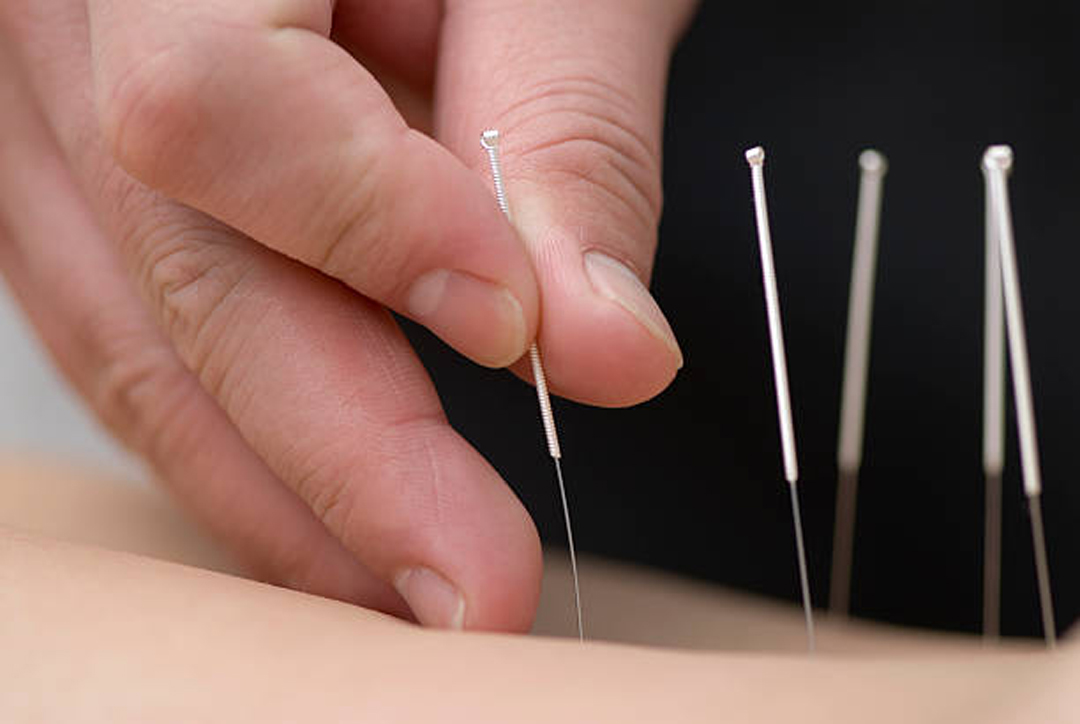If you have a chronic disorder or are suffering from persistent pain and your doctor can’t help you, you can hardly be blamed for seeking relief through alternative forms of treatment. A variety of therapies and practitioners are considered part of alternative or complementary medicine that is, they are not an integral part of conventional medicine as practiced by physicians with MD degrees and other healthcare professionals who typically work with medical doctors.
Alternative therapies include traditional systems of medicine developed in other cultures (such as Chinese acupuncture or the Indian system of Ayurvedic medicine); Western treatment systems such as homeopathy; mind-body therapies such as meditation or hypnosis; remedies based on herbal or dietary supplements; therapies consisting of body movement and manipulation (like massage or chiropractic); and energy-based therapies such as Reiki (a Japanese-derived treatment based on channeling spiritual energy through the practitioner). Each therapy has its advocates and critics among patients, physicians, and researchers. One aspect all these therapies share is that their effectiveness has been difficult to demonstrate in controlled studies; evidence about them is frequently based on tales from people who have gotten relief.
Therefore, it is safest to think of alternative treatments as adjunct therapy. In other words, don’t substitute one or more of them for your regular medical care. Talk to your physician about any new approaches you’re considering, and make sure he or she continues to keep an eye on your condition. There is little potential harm in trying an alternative treatment for pain relief, unless it keeps you from getting a correct diagnosis of a treatable or curable condition.
Be skeptical of treatments that claim to cure everything from depression to fatigue to cancer. Also beware of practitioners who are unlicensed or unregulated and be wary of their products as well. For example, although there are a handful of medical doctors who practice homeopathy in the United States, in most state anybody can set up shop as a homeopath. A homeopathic practitioner will almost certainly sell you remedies that are made up of extremely diluted natural products and often contain nothing more than water or alcohol. It’s true that these solutions are not likely to harm you but can they do you any good?
What follows are descriptions of four types of practitioners who may be helpful for some conditions in some people. Still, when considering these alternatives to conventional medicine, stop and think: Are you certain of your diagnosis? Have you sought a second or even third opinion? Does your health insurance plan provide coverage? (An increasing number of plans are beginning to cover the cost of some alternative treatments, but many still do not. Be sure to check your plan.)
Acupuncturists

Practiced in China for some 2,000 years, acupuncture has become one of the most popular alternative treatments in the United States. The theory of acupuncture is that by penetrating the skin with thin metal needles at specific anatomical locations, called acupuncture points, the flow patterns of energy (called “Qi”) will be altered healthfully or therapeutically. Sometimes the acupuncturist inserts the needles and leaves them in place for a period of time. Sometimes he or she manipulates them or applies electricity. Scientific medicine, of course, cannot show that Qi exists, cannot measure it, and cannot show that it is produced by any structure or process in the body let alone find out whether inserting needles beneath the skin would alter it. Acupuncture needles should be inserted where Qi comes to the surface, but it is hard to ascertain where this is.
A panel of experts convened by the National Institutes of Health (NIH) to review studies of acupuncture concluded that it may be helpful for some conditions. The panel stated that biological responses have been demonstrated in people having acupuncture. That is, their bodies react chemically. It may be that needle sticks at various points stimulate the body to produce pain relieving and mood lifting chemicals (such as endorphins and serotonin) or anti-inflammatory substances. Skeptics say that wishful thinking may also play a role that acupuncture is possibly an example of the placebo effect: if you think it can help, it will.
What acupuncturists provide
Acupuncture has been used to treat a variety of kinds of pain from backaches and headaches to dental problems. In China it’s even used as anesthesia for some patients undergoing surgery. It appears to be effective as a short-term treatment; few studies have looked at its long-term effectiveness. Some researchers have reported that acupuncture can be effective even for animals in pain.
According to the NIH panel, there is clear evidence that acupuncture is useful to treat the following: adult nausea and vomiting resulting from surgery or chemotherapy; morning sickness in pregnancy; and postoperative dental pain. It might be helpful as an adjunct or alternative therapy for conditions such as the following, although the evidence is not clear: menstrual cramps, addictions (such as smoking), muscle pain (as in conditions like fibromyalgia), tendinitis (tennis elbow), carpal tunnel syndrome, headache, low back pain, asthma, and stroke rehabilitation.
Special risks
When performed by a trained practitioner who always uses sterile needles, acupuncture presents few risks. Incorrectly inserted needles can cause tissue swelling. If the needles are not sterilized and the skin not adequately cleaned, local infection or blood borne diseases such as infection with HIV (the virus that causes AIDS) or hepatitis may result. Because of the risk of AIDS and hepatitis, disposable needles are recommended; some states require that acupuncturists use disposable needles. Electric stimulation, either from needles or from a transcutaneous electrical nerve stimulation (TENS) device, should not be used on a person with a pacemaker, a fever, or an irregular heartbeat.
Choosing an acupuncturist
Approximately 7,000 non physician acupuncturists currently use acupuncture to help control pain and to treat addictions, depression, insomnia, and other health problems. Also, an estimated 3,000 medical doctors and osteopaths have studied and use acupuncture in their medical practice.
Keep these points in mind when choosing an acupuncturist:
- In the United States, acupuncture can be legally performed in all states. Some states permit only physicians to perform it, while others allow supervised or unsupervised laypeople to practice. In choosing an acupuncturist, you should be aware of the licensing regulations in your state. The majority of states (and the District of Columbia) license non-physician acupuncturists. However, not all states require competency exams or extensive training.
- If you are in a state that licenses acupuncturists, choose a state-licensed, board-certified practitioner.
- Make sure the practitioner attended an accredited U.S. acupuncture college or a reputable overseas school. (Most American-trained acupuncturists now receive four years of education in accredited schools.)
Chiropractors

According to one estimate, about 5 percent of Americans see chiropractors regularly, and the majority like what they get. Yet many laypeople and physicians think chiropractic is worthless, fanciful, or even harmful. Indeed, chiropractors and the medical profession have waged verbal and economic war on one another for many years.
Chiropractic (a noun derived from the Greek cheir, meaning hand, and praktikos, meaning practical) was founded in 1895 about the same time that modern medical schools came into being. Chiropractic was based on the theory that subluxations (that is, minute misalignments of the vertebrae) are the source of illness, and that spinal manipulation can therefore prevent or cure illness. However, many chiropractors no longer endorse this “single source” theory or base their practice on it.
What chiropractors provide
One problem in sorting out the claims and counterclaims about chiropractic is that chiropractors now represent such a wide range of practices and treatments. Within the profession, there are the “straights,” or old-line practitioners, whose theoretical base are subluxation and who may obtain frequent x-rays and perform manipulations. The “mixers” may adopt other approaches. Some promote health fads like iridology and hair analysis, as well as prescribe and then sell vitamin supplements and “glandular” treatments of dubious value. Some look upon themselves as family doctors and as the only health provider you’ll ever need. Others work with medical doctors, referring patients and taking referrals.
Some newer-minded chiropractors have voiced criticisms of older theories and practices. The most progressive group, the National Association for Chiropractic Medicine (NACM), has disavowed the subluxation theory. NACM members limit themselves to treating low-back pain and are likely to work in tandem with medical doctors considering themselves partners of the medical profession rather than competitors.
Recently, the RAND Corporation reviewed all existing scientific evidence and found that chiropractic can be effective in treating severe back pain when no severe nervous indications are found. But these results were incomplete in the RAND study. Only acute low-back pain patient did much better with chiropractic treatment. Those with chronic low-back pain, sciatica, or neurologic involvement did not do so well. Another review, published in the British Medical Journal, found that evidence supporting chiropractic treatment was not conclusive.
Evaluating practitioners
Chiropractic, like other professions, is evolving. One reason people like chiropractors are that they seem to take more time with patients, and the treatment is usually hands-on.
If you have acute low-back pain and wish to see a chiropractor, take these precautions:
- Be wary of any chiropractor who claims that subluxations are the root of most illnesses. Similarly, be wary of practitioners and there are many who claim to cure everything from bedwetting, chronic fatigue syndrome, and migraines to menstrual cramps, cancer, and heart disease. A recent promotional piece from one New York chiropractor, for instance, claims that by “correcting spinal nerve stress” he can “turn on your inner doctor” and cure any of these ailments and more. The ad goes on to say, though, that chiropractors don’t “treat disease.” This is double talk.
- Be wary of any chiropractor who sells you the supplements and nutritional treatments he prescribes. State laws generally prohibit physicians, except in special circumstances, from selling the medicines they prescribe to their patients, and for good reason: such regulations were designed to protect patients from being exploited.
- Avoid any manipulation involving the neck, as this can be very dangerous.
- Don’t agree to full-spine or full-body x-rays. According to the chiropractors who now work with the National Council against Health Fraud, full-spine x-rays have little or no diagnostic value and expose patients to unnecessary and potentially dangerous amounts of radiation.
- When dealing with a chiropractor, as with any practitioner, it pays to be well informed and to protect you. As you would with a medical doctor, question a chiropractor about treatments. Don’t believe anybody who promises miracles or who asks you to sign a “treatment contract” obligating you to show up every week or every month to “maintain” your health.
- The National Association for Chiropractic Medicine, whose members confine chiropractic treatment to management of neuro-musculoskeletal disorders, offers assistance to consumers in finding member practitioners.
Massage therapy

Massage (the word comes from the Arabic Massa, to stroke) is one of the oldest hands-on therapies, but modern medical researchers have paid it little attention. Few controlled studies of the physical effects of massage have ever been attempted. What massage therapy can accomplish, however, is to relax muscles, relieve muscle spasms and pain, increase blood flow in the skin and muscles, ease mental stress, and induce relaxation. It can also be useful in increasing the range of motion of joints after injuries.
What massage therapists provide
Massage can be done to the entire body or restricted to the back, neck, shoulders, or feet. It typically involves kneading and stroking of the skin, and the application of pressure on tense muscles. Common method in America is recognized as “effleurage,” or Swedish massage, which is actually a gentle stroking and kneading, occasionally with tapping, clapping, or comparable percussive actions by the hands. Acupressure and shiatsu (finger pressure) are other massage systems that can be used along with or instead of stroking and kneading. There are many other massage techniques involving manipulating and pressing joints, bones, and soft tissues.
To do you good, massage should feel good. When tense muscles are massaged, you may feel discomfort or even brief pain. But a good massage should not be painful and should leave you feeling relaxed—not tense and certainly not sore.
Though you can massage your own body, massage is most relaxing when someone else does it for you. Many health professionals practice massage physical therapists, athletic trainers, nurses, chiropractors, and, of course, qualified massage therapists.
Massage can be comforting and helpful, but it is not a substitute for the medical treatment of an injury. If you have an acute injury such as a sprain, tendinitis, or a swollen joint, get a physician’s advice. Injuries should not be massaged directly. Because it is relaxing and stimulates blood flow, massage can be helpful for injured or sick people, especially if they are confined to bed.
Choosing a massage therapist
A number of states have agencies that regulate massage practice and require professional training for licensing (usually a minimum of 500 classroom hours). If you are looking for a masseur or masseuse in one of these states, seek a licensed therapist.
Members have to graduate from an approved study program and pass an exam. Many doctors can refer you to a qualified massage therapist.
Osteopathic physicians

Osteopathic medicine occupies a unique niche. Though osteopathy once stood very much outside the conventional medical establishment, its practitioners have moved increasingly toward the practice of mainstream medicine. Doctors of osteopathic medicine, or DOs, receive training akin to that of MDs. They complete a four-year program of basic medical education at an osteopathic medical college, then typically serve an internship where they gain experience in internal medicine, family practice, pediatrics, and obstetrics.’ Many DOs then take a residency program in a medical specialty. Indeed, DOs practice in all branches of medicine, from psychiatry to obstetrics to emergency medicine, though most function as primary-care practitioners rather than as specialists. And they are licensed in all 50 states to deliver the same kinds of services from prescribing drugs to delivering babies and performing surgery that MDs can.
Osteopathic medicine was developed in the late 1800s by Dr. Andrew Still, who believed that manual manipulation of the musculoskeletal system was useful in stimulating the body’s ability to fight disease and restore health. But as medical science developed, osteopaths, unlike chiropractors, incorporated many of modern medicine’s techniques, and today’s practitioners typically utilize standard diagnostic tests, medication, and surgery. Still, many DOs have continued to place an emphasis on the musculoskeletal system as the key to understanding and treating many health problems. Some DOs also incorporate other modes of alternative medicine such as homeopathy and craniosacral therapy (manipulating the skull bones to relieve pain) into their treatment. Currently, there is much debate within the osteopathic community over the role of manipulation therapies and other alternative treatments.
What osteopaths provide
Osteopaths, especially those in general or family practice, treat a wide range of conditions, from colds and flu to asthma, migraines, high blood pressure, gynecological problems, sinusitis virtually any health problem an MD will deal with. Typically, a DO will evaluate your condition using blood and urine testing, x-rays, and other medical diagnostic tools but will also touch your back and limbs and check your joints, muscles, and ligaments for tenderness, pain, and signs of injury or impairment. Once a problem has been diagnosed, treatment may entail a combination of osteopathic and conventional methods. In treating, say, an attack of sinusitis, a DO might employ manipulation to help drain sinuses and relieve pain, but will also prescribe an antibiotic to combat the infection.
Back pain and other musculoskeletal problems are still among the most common complaints that initially send people to an osteopath. Few studies have been done assessing the effectiveness of osteopathic manual therapy for treating back pain. But one study published in the New England Journal of Medicine found that patients treated by DOs for low-back pain that had lasted three weeks to six months had as good an outcome as patients treated by MDs and the DO treated patients recovered with less reliance on medication. Of course, the effect of any treatment for low-back pain is difficult to measure, since most cases of back pain will eventually improve without any treatment.
As osteopathy has moved closer to mainstream medicine, it’s often not clear what a DO offers that is truly distinctive from the services of an MD. Some osteopaths claim that their form of medicine focuses on preventive care and treating the “whole person” but in recent years, MD shave paid increasing attention to disease prevention and wellness, further blurring the line between the two professions. In a parallel trend, one survey of osteopaths found that younger Dos are less likely than their older colleagues to use osteopathic manipulation in treating patients.
Two distinctions are worth considering. A greater percentage of DOs than MDs work in rural communities underserved by MDs and DOs are more likely than MDs to end up as primary care and family practitioners. Hence, in some communities, gaining access to a DO may be easier than obtaining care from an MD. DOs may also charge less than MDs.
Choosing an Osteopath
There are about 40,000 DOs in practice in the United States (they make up about 5 percent of American physicians). DOs are licensed by state boards, just as MDs are, for the full practice of medicine and surgery. In some states, the same checks are given to MDs and DOs; while other states administer normally separate licensing exams. Progressively, medical insurance covers services from a DO.
In addition to listing practitioners, the association also has information on osteopathic services and training and provides listings of accredited colleges and osteopathic organizations in different states (which can also provide names of DOs in your area). The association does not represent all DOs, and it embraces many of the benefits attributed to osteopathic manipulation.
If you decide to turn to a DO for primary care, choose one who has trained as a medical resident. Ask about his or her philosophy of diagnosis and treatment and opt for a practitioner who does not promote osteopathic manipulation either as a general therapy or as the primary treatment for health problems other than back pain.







